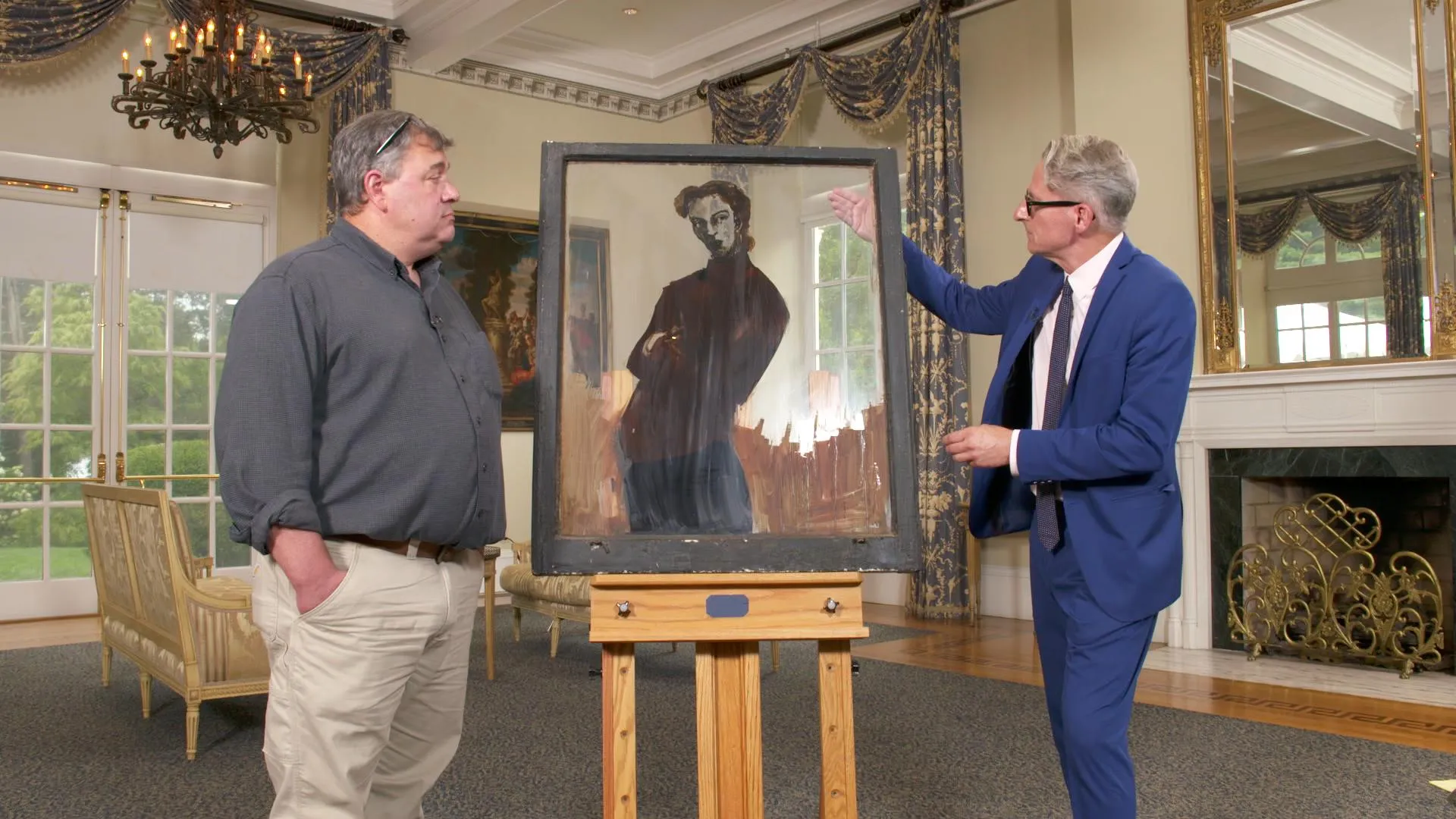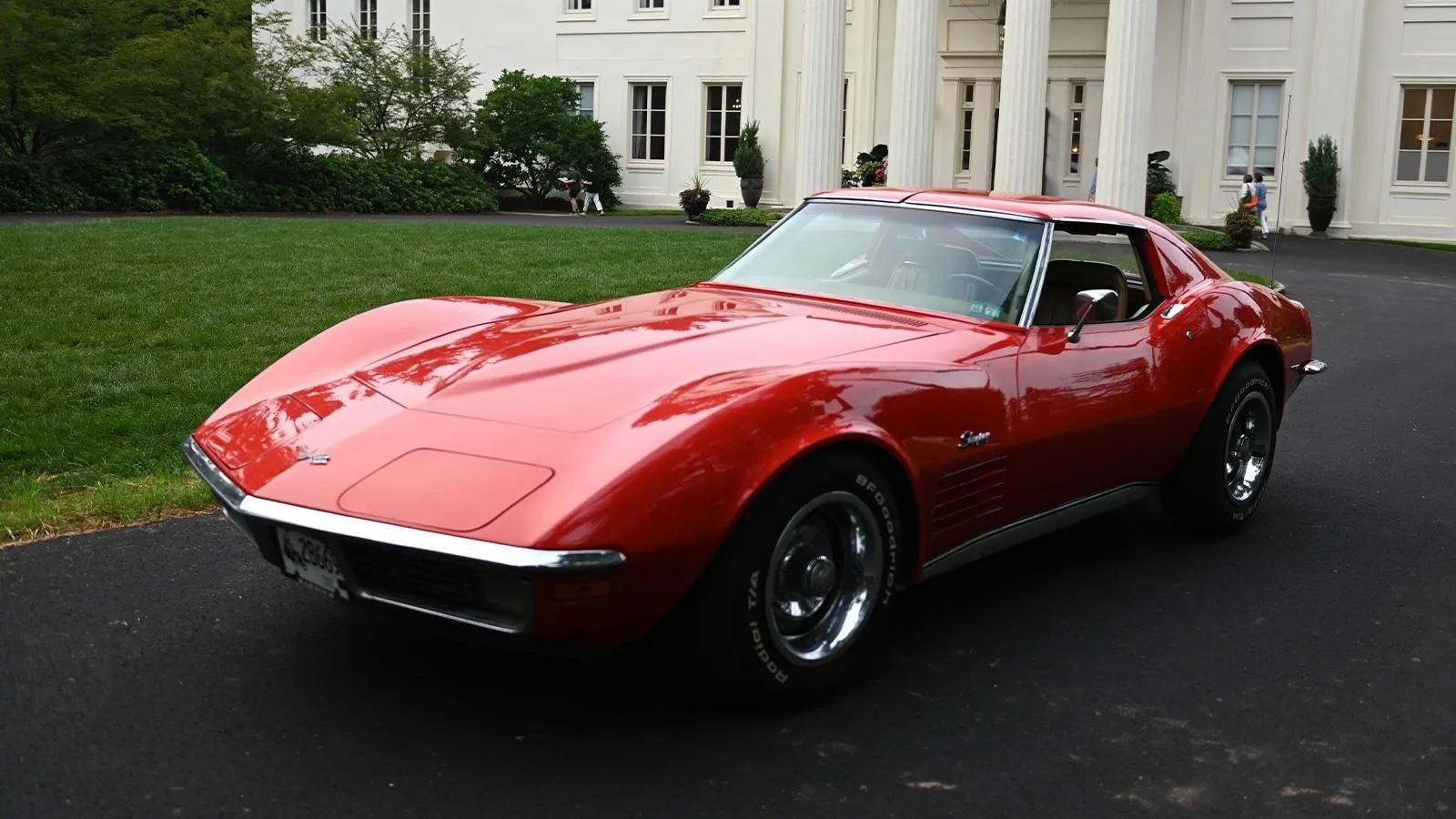GUEST: It's a painting by Elizabeth Peyton, who I knew as Betsy. We went to high school together. She, after high school, went to SVA. After she graduated, she had a show in the city, and this painting was in that show. A month or so after that show, she was in the process of moving and she asked if I'd like to pick something out, and I picked this painting. I love it-- I love it. That's a portrait of, of one of her close friends at the time, so she was happy to see it go to another friend. The window itself was from a building that the Rockefellers owned in New York City. She was friends with one of the younger Rockefellers who procured a bunch of windows from a renovation.
APPRAISER: It is an original painting by Elizabeth Peyton.
GUEST: Correct.
APPRAISER: It's an oil done mostly in brown tones, a little bit in black tones, and slightly lighter tones. It's done directly on glass. She more commonly does paintings on paper, on canvas, on board, on panel. So it's unusual to see. Unusual to see also because she tends to work generally in a slightly smaller format. A fascinating artist. I'm a real fan of her work. There are a lot of people, when you read about Elizabeth Peyton, who think of her really as a painter of celebrities. It's my understanding, she really doesn't like to be thought of as "a painter of celebrities," à la somebody like an Andy Warhol. She is somebody who likes to do pictures of people. She's interested in people who have charisma, people who make her feel a certain way and convey a certain psyche in her portraits. The sitter is sort of slightly tilted on an angle, which I find to be very interesting. There is a gaze in the sitter's eyes. I don't know if it's sort of an all-knowing gaze or sort of engrossed in thought. So all of that said, she is nonetheless known for painting portraits, and specifically portraits of well-known people. So it's a little bit hard to put a price on it. In this case, the provenance coming from that 1987 inaugural solo show in Soho is really ironclad. The most expensive works-- and we're talking about works in recent times, done in the 2000s, some in the 1990s-- a number of them, impressively, have sold for in excess of $1 million. So upward prices, artist having a moment versus an early work that's slightly not atypical, but shows where her work was headed, where it was progressing. And my sense is, if offered today at auction, I would probably put on an estimate of $100,000 to $200,000.
GUEST: (softly): Wow. That's pretty substantial.
APPRAISER: I think it's a great early example of her work. People who are watching the ROADSHOW today are probably saying, "There's something I haven't seen before."












